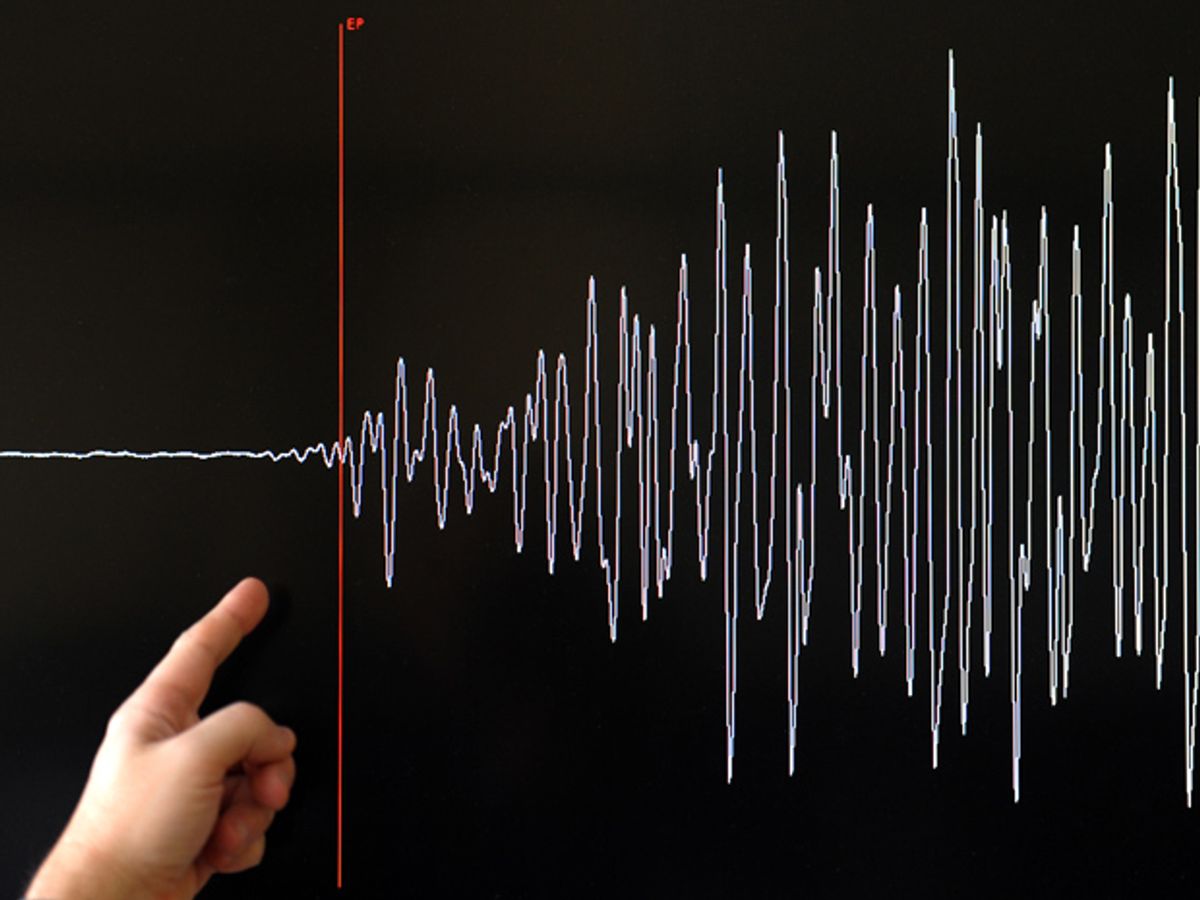When an earthquake hit California’s Napa Valley in 2014, ShakeAlert, a demonstration earthquake warning system under development by the U.S. Geological Survey (USGS), gave a 5 to 10 second warning. Had such a system been in place in Nepal this month, residents of Kathmandu would have had about 15 to 20 seconds to get out of the most dangerous buildings or take cover where possible.
Though it doesn’t seem like much, that’s also enough time to trigger automated shutdown systems for rapid transit (the experimental system is already tied to the BART transportation network), nuclear power facilities, or semiconductor manufacturing plants. Japan has had an earthquake alert system pin place for several years; it shut down bullet trains and factories when the 2011 Tohoku quake struck and sent cell phone “take cover” warnings.
These kinds of systems come at a high price, however. Likely too high for a country like Nepal. The USGS estimates that the cost of an earthquake early warning system for the west coast of the United States would be US $38.3 million for the equipment alone, and an additional $16.1 million annually for maintenance and operations. California has some federal funding for rolling out the system, but nowhere near enough.
But Battalgazi Yildirim, founder of Palo Alto-based Zizmos, thinks there’s better, more affordable approach to earthquake warning. And, with seed money from the National Science Foundation, he’s about to start a widespread test of his idea in California in May.
All earthquake alert systems operate on the same principal. (There are also people working on earthquake prediction of days or weeks, that’s a far more difficult proposition than an alert of tens of seconds.) Alert systems deploy a network of sensors to pick up the first rumblings of an earthquake, and then send out an alert to automated systems, alarms, or mobile devices. The S waves of motion, which are the most destructive waves, travel through the ground at about 3 kilometers per second; a radio signal or one traveling over the Internet can arrive almost instantaneously. So unless you’re standing at the epicenter, the alert beats the arrival of the earthquake.
ShakeAlert and its brethren rely on extremely sensitive sensors placed near known fault lines. The sensors are expensive, and the faults are often in remote areas, requiring installation of power or batteries and weatherproof housing.
Yildirim thinks he can get as good—or, in some cases better—earthquake data from a network of sensor packages built from low-cost MEMS devices attached to cheap, off-the-shelf cell phone equipment that manages data gathering and communication.
“The sensor packages used by the USGS cost about $30,000 each,” Yildirim says. “We’re putting out sensors that cost $100 each to build.”
Yildirim says his Zizmos system will have virtually no installation or maintenance costs, because he plans to rely on the kindness of the crowd. Zizmos asks for volunteers to donate a tiny bit of interior wall space and a power outlet to host a sensor package, which is about the size of a deck of cards. Though these packages won’t go into the most remot areas along fault lines, and are far less sensitive than the types of sensors used by systems like ShakeAlert, the wider distribution, he says—10,000, or even 100,000 to cover California, compared with 1000 planned by the USGS—more than compensates for these deficits.
“With more sensors in place,” Yildirim says, “we simply have a better chance of being close to the epicenter of a quake.”
The project stemmed from Yildirim’s post-doctoral research with the Quake Catcher Network, a project cofounded by Stanford professor Jesse Lawrence and USGS researcher Elizabeth Cochran. Quake Catcher was designed to crowd source earthquake data using sensor package plugged into the computers of volunteers. However, these only worked when laptops were open or desktops turned on and users who wanted to move their laptops or use them actually on their laps had to disconnect the sensors.
Yildrim quickly realized that a dedicated package, firmly bolted to a wall, would be vastly better than a portable, USB connected system, and last year started Zizmos to build it. The company was approved for a $150,000 research grant from the National Science Foundation in November. The trial starting this May will involve 268 sensors distributed in California—30 each in Hollister, Coalinga, and Parkfield, all earthquake hotspots—the remainder scattered in Northern California from Santa Cruz to Napa. When a sensor detects a rumble, it will send information about the time of the event and magnitude of the shaking to a cloud-based server; algorithms will check reports from neighboring sensors to determine whether the vibration was local (a truck going by, a child playing basketball in the house) or felt elsewhere. If the latter, the system will calculate a hypothetical epicenter for the earthquake, the original time of the event, and an estimated magnitude, and, for earthquakes with magnitudes greater than 4.0, issue an alert. Zizmos is developing a mobile device app to receive the alert and provide information about expected magnitude on arrival, time left to arrival, and possible actions to take, like “Duck, cover, and hold!”
If this trial is successful, Zizmos will approach the NSF for what is called Phase II Small Business Innovation Research Funding, and use the funds to run a larger trial. Then the company plans to convert the sensor systems—which are still hand-built prototypes—into a more manufacturable and attractive package, so Zizmos can seek venture funding. Alternatively, the technology could be adopted by a company like Nest that already builds systems (thermostats and smoke detectors) that are bolted onto walls; Yildirim estimates that it would only cost $2 per device to add such functionality, given these devices already have much of the technology on board.
Zizmos plans to offer its app and warnings for free; the company is not a non-profit, however, and thinks there is money to be made by converting the data into high-resolution shaking maps. Conventional earthquake sensors, because they are so expensive, just can’t get the detailed earthquake data that Zizmos expects to be gathering, particularly in urban areas. Zizmos believes this data would be valuable to insurance companies, realtors, city planners, manufacturing companies, and others.
Tekla S. Perry is a senior editor at IEEE Spectrum. Based in Palo Alto, Calif., she's been covering the people, companies, and technology that make Silicon Valley a special place for more than 40 years. An IEEE member, she holds a bachelor's degree in journalism from Michigan State University.



